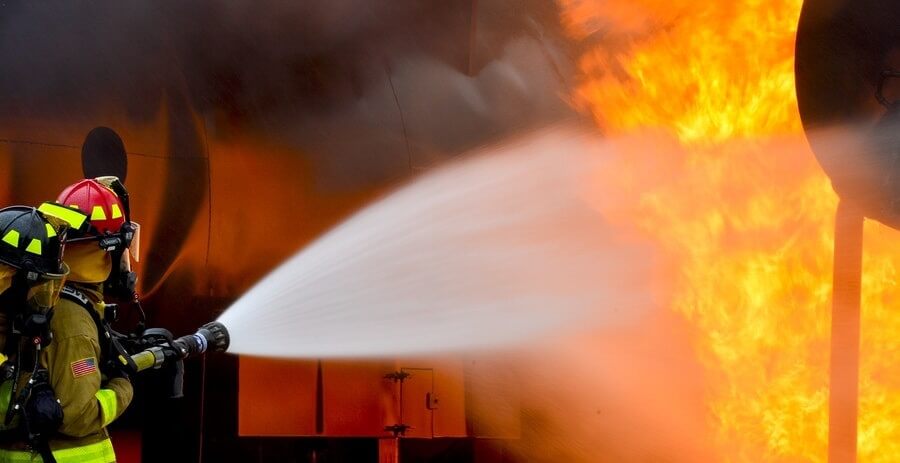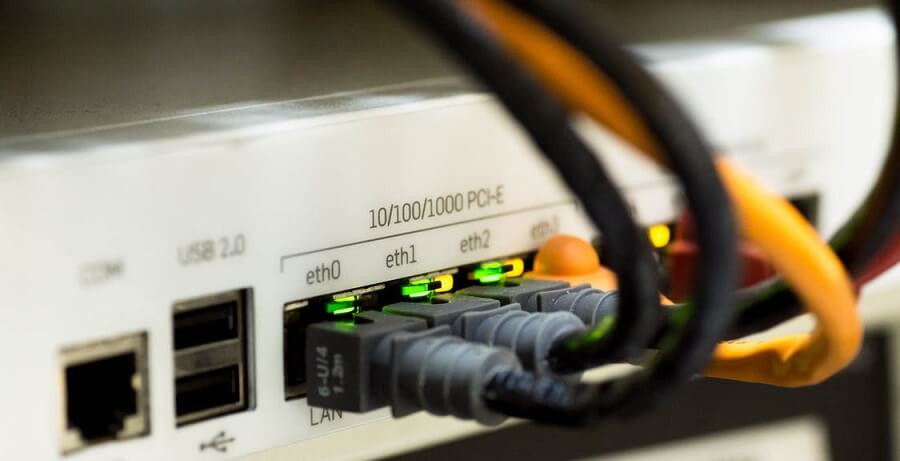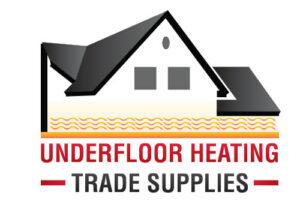Home – a place that you feel comfortable, secure and safe. But how safe is your home? Although it might feel like the least dangerous place that you could be, your home is where you are statistically most likely to have an accident[i]. Accidents in the house cost UK taxpayers a whopping £45.63 billion annually, with an estimated 2.7 million people having to have home-related injuries treated at the hospital.
You may be wondering what you can do to reduce these numbers, stop accidents happening in your own home and make it safer overall. Read on and use our ultimate home safety checklist to avoid your family adding to the accident-at-home statistics.
Fire Safety

We all have a generally good idea about fire safety, and it is something most of us have had drilled into our heads from a very young age at both school and home. Your risk of having a house fire is statistically quite low – with only 1% of households in the UK having a fire across 2016 and 2017[ii]. Despite this, it’s vital not to adopt an ‘it could never happen to me’ mind frame when it comes to fire.
Hazards
These are the top fire hazards that could be present in your home.
- Faulty/damaged electrical wiring
- Electrical products such as electric blankets, fairy lights, straighteners and space heaters
- Overloaded electrical sockets
- Candles and any other exposed flame
- Built up dust in electric sockets and heaters
- Grease build ups and hot oil in the kitchen
- Faulty appliances
- Mess and clutter around the home – making it easier for fire to spread and harder to escape
Safety
Although you may think your home is up to scratch when it comes to fire safety, there may be several things you can do to make it even safer.
- Smoke alarms – you should have a smoke alarm on each floor of your home[iii]. Your smoke alarms should be tested once a month at least, and the batteries should be changed once a year. Smoke alarms should be replaced after 10 years.
- Fire escape plan – discuss a fire escape plan with your family, especially with younger children. Make sure they know what to do if a fire breaks out.
- Kitchen safety – when cooking, don’t leave the kitchen unattended. Keep fabrics away from the stove and keep anything that could be easily knocked over away from the stove. Make sure your appliances are kept clean.
- Out of reach – don’t let children handle matches or lighters, and keep them well out of reach.
- Annual checks – you should be having your boiler and/or underfloor heating system checked on an annual basis to make sure they are running smoothly and don’t pose any fire or safety risks.
Before going to bed, make these quick checks:
- Check cooker and other kitchen appliances are off, including the washing machine
- Make sure candles are properly extinguished
- Ensure exits are clear and that everyone knows where window and door keys are kept
- Close all internal doors at night
- Do not leave your phone charging unattended at night, especially not on or around your bed
Electrical Safety

Electrical safety is as important as fire safety, though people are often not mindful of all the risks. Electricity is something we take for granted and it’s easy to forget how dangerous it can be, and the risk of injury or death it carries when we aren’t careful around it[iv].
Hazards
- Defective, damaged and poor wiring
- Fake or knock off items which haven’t been tested properly and don’t meet industry standards
- Electrics being handled with wet hands
- Outlets in close proximity to water
- Lightbulbs which are close to curtains, drapes, or covered in any way
- Electrical cords and wires which are covered with heavy materials, causing them to overheat
Safety
As well as looking out for hazards, you should carry out the following safety checks.
- Damage – look out for damaged wires and/or cables, and don’t allow them to touch heat sources. Tidy cables and ensure they aren’t stretched/bent. This can damage the insulation around the wires. If you spot any damage, have the wires replaced immediately.
- Don’t overload – never overload electrical sockets and make sure the maximum voltage of extension leads isn’t passed.
- Clean – keep extractor fans clear of dirt and grime. Clean fans reduce fire hazards and keep electrical goods running efficiently.
- Keep clear of shocks – if you are shocked by an appliance or see it spart, stop using it immediately and either get it repaired by an expert or replace it.
- Read instructions – before you use an appliance for the first time, make sure you carefully read any instructions or documentation that come with it.
- Keep away from water – don’t touch electrics with wet hands or put them in proximity to water.
- Watch children near electrical items – when children are about, it can only take 2 seconds for something to go wrong. Keep them out of danger by using safety covers on unused sockets, leaving handheld devices like hairdryers out of reach, and making sure cables can’t be tripped on or pulled.
Never take risks with electricity. If something seems wrong with an electrical item, don’t take any chances, stop using it straight away.
Gas Safety

Gas can be an invisible killer. Although some UK households are switching to fully electric systems, gas is present in 85% of British homes, with 23 million houses connected to the gas grid[v]. This makes it important to know the hazards of gas and how to make sure you home is safe.
- Install a carbon monoxide detector in your home.
- Install a gas detector in your home.
- Have gas appliances such as boilers, ovens and stoves fitted by a registered engineer. Have these serviced regularly.
- If you think a gas appliance is broken, stop using it immediately.
- Ensure gas appliances are turned off before going to bed or leaving your house.
If you smell gas OR suspect that there is a leak leave the house straight away. Once you are clear of your home, you should call the National Gas Emergency Service on this number for assistance 0800 111 999.
Assess your home safety
We hope the above advice will help you to assess your home safety and put your mind at ease. Try to run through these checks a couple of times a year, and always be on the look out for hazards and accidents that are waiting to happen.
References
Beetham Electric. (2016). EIGHT MOST DANGEROUS ELECTRICAL HAZARDS IN YOUR HOME. Retrieved from Beetham Electric: http://www.beethamelectric.com/industry-news/eight-most-dangerous-electrical-hazards-in-your-home/
gov.uk. (2015). The Smoke and Carbon Monoxide Alarm (England) Regulations 2015: Q&A booklet for the private rented sector – landlords and tenants. Retrieved from gov.uk: https://www.gov.uk/government/publications/smoke-and-carbon-monoxide-alarms-explanatory-booklet-for-landlords/the-smoke-and-carbon-monoxide-alarm-england-regulations-2015-qa-booklet-for-the-private-rented-sector-landlords-and-tenants
Ministry of Housing, Communities & Local Government. (2017). English Housing Survey. Retrieved from Ministry of Housing, Communities & Local Government: https://assets.publishing.service.gov.uk/government/uploads/system/uploads/attachment_data/file/724327/Fire_and_Fire_Safety.pdf
ROSPA. (2021, April). Facts and figures. Retrieved from ROSPA: https://www.rospa.com/home-safety/advice/general/facts-and-figures
The CCC. (n.d.). Annex 2. Heat in UK buildings today. Retrieved from The CCC: https://www.theccc.org.uk/wp-content/uploads/2017/01/Annex-2-Heat-in-UK-Buildings-Today-Committee-on-Climate-Change-October-2016.pdf
Sources
[i] https://www.rospa.com/home-safety/advice/general/facts-and-figures
[ii]https://assets.publishing.service.gov.uk/government/uploads/system/uploads/attachment_data/file/724327/Fire_and_Fire_Safety.pdf
[iii] https://www.gov.uk/government/publications/smoke-and-carbon-monoxide-alarms-explanatory-booklet-for-landlords/the-smoke-and-carbon-monoxide-alarm-england-regulations-2015-qa-booklet-for-the-private-rented-sector-landlords-and-tenants
[iv] http://www.beethamelectric.com/industry-news/eight-most-dangerous-electrical-hazards-in-your-home/
[v] https://www.theccc.org.uk/wp-content/uploads/2017/01/Annex-2-Heat-in-UK-Buildings-Today-Committee-on-Climate-Change-October-2016.pdf
